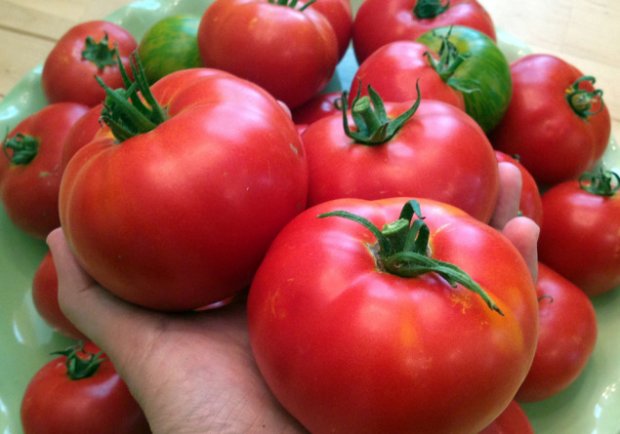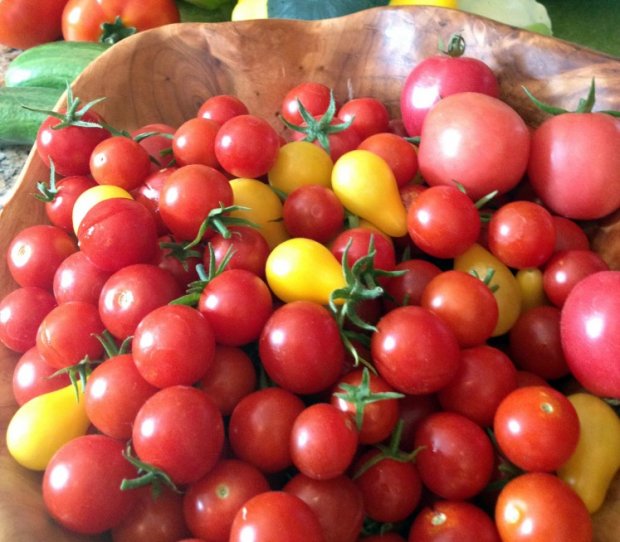Time to Seed Tomatoes
January 15, 2016
It’s right about this time each year that I really start longing for my summer garden. I’m tired of my toes being cold and I’ve officially run out of my fall harvested tomatoes. If you too are looking forward to a bounty of vine-ripened tomatoes, then you’d better hop out of that winter armchair and grab those seed catalogs! Just because it’s January, doesn’t mean we get to rest on our gardening laurels here in Dallas. If you’re planning on growing any heirloom or specialty tomato varieties, chances are you’re going to have to grow them from seed. If you’re going to grow them from seed, you need to do it now.

‘Celebrity’ hybrid and ‘Green Zebra’ heirloom tomatoes.
Tomato transplants take a good 8-weeks to germinate and grow into a transplant large enough to set out in the garden. Our average last frost date is March 17th, which means you’ll need to get those tomato seeds germinated by the last week in January if you want to make that planting date. Experienced tomato gardeners know that if they can get their transplants outdoors a tad bit earlier, it means a bigger harvest. But won’t they freeze if you plant them before March 17th? Not if you cover them with frost cloth (sometimes two layers are necessary). I typically set out my tomato transplants before March 10th…but sometimes even the last week of February. If you’re willing to hedge your bets and keep the frost cloth at the ready, you can get your tomato plants flowering earlier, which means more set fruit during optimal temperatures.

Planning on waiting until after all possible chances for a freeze have passed? Don’t bother. If you do, it will be too late to plant tomatoes, at least the 4″-pot sized plants. If you’re late to the game and decide to hit the garden centers at the end of April, don’t waste your money on 4″ tomato transplants. Look for 2-gallon or larger potted plants that already have flowers and some baby fruit on them. Or, start your fall tomato transplants from seed in May.
When starting tomato seeds indoors, remember that you’ll need to warm up the soil to speed up germination and a good 16-hours of supplemental light after seedlings sprout. Invest in a good seedling heat mat and grow light if you want your seedlings to mature successfully. Relying on that “bright” winter window typically results in a a disappointment as seedlings stretch for light, then topple over and die.

